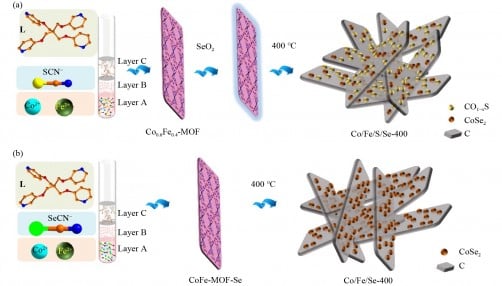A research team from Jianghan University and Fuzhou University has made significant strides in creating efficient electrocatalysts for water splitting. The group, led by Wang-ting Lu, Fan Yu, and Yun Zheng, focused on using two-dimensional (2D) layered metal-organic frameworks (MOFs) to develop high-performance selenium-containing catalysts. Their innovative approach addresses some of the limitations associated with traditional methods of synthesizing MOF-derived selenides.
Traditionally, the production of MOF-derived selenides has relied on self-sacrificing templates, a process known for being energy-intensive and challenging to control regarding structural and compositional uniformity during pyrolysis. The researchers sought to overcome these hurdles by incorporating selenium into the cobalt-iron MOF structure using two distinct strategies. The first method involved etching the prepared MOF with a selenium dioxide (SeO2) solution, while the second method replaced the thiocyanate ion (SCN−) with a selenium cyanide ion (SeCN−) during the construction of the framework.
The electrochemical performance of the resulting selenium-containing electrocatalysts was rigorously evaluated, focusing on their effectiveness in facilitating both the hydrogen evolution reaction (HER) and the oxygen evolution reaction (OER). The findings indicated that both strategies significantly enhanced the HER performance during overall water splitting, showcasing the potential of these materials in sustainable energy applications.
The researchers attribute the high electrochemical performance of their catalysts to a unique 2D hierarchical porous structure and the strong synergistic effects between the various components within the material. This work not only highlights the potential for designing layered MOFs with sulfur- or selenium-containing linkers as effective water splitting catalysts, but it also offers a novel approach to synthesizing MOF-based metallic selenides.
As the demand for clean energy sources continues to rise, advancements such as these are crucial in developing economical and low-energy-consuming electrocatalysts. The research underscores the importance of innovative materials in the quest for sustainable energy solutions. The full findings of this study can be found in the relevant scientific journal, adding to the growing body of knowledge in the field of electrocatalysis.







































































